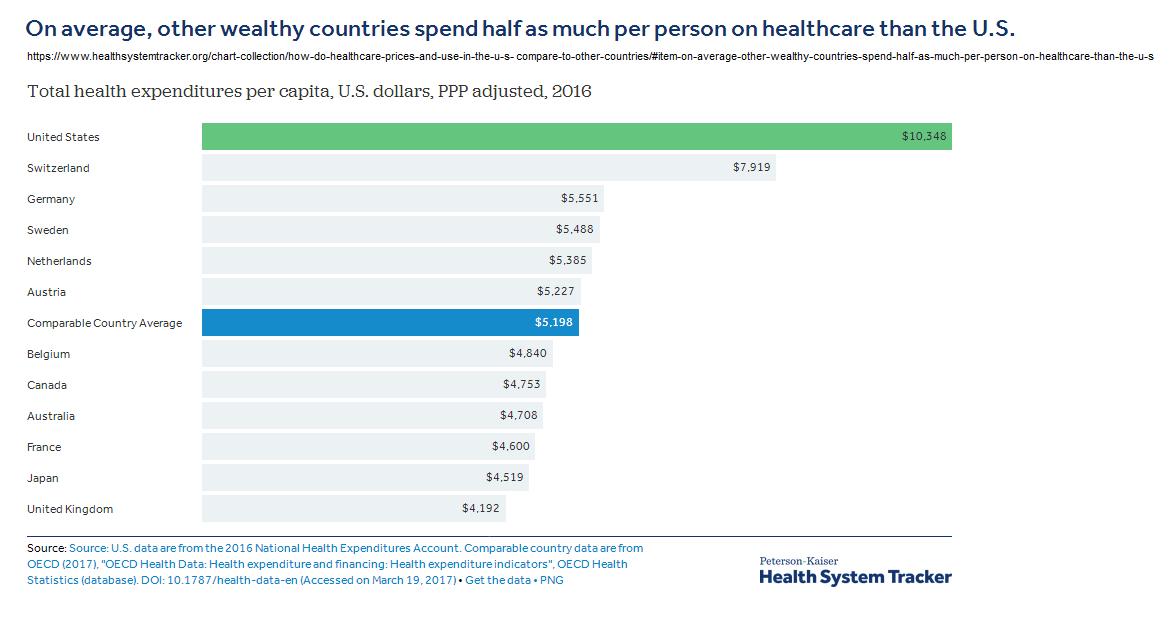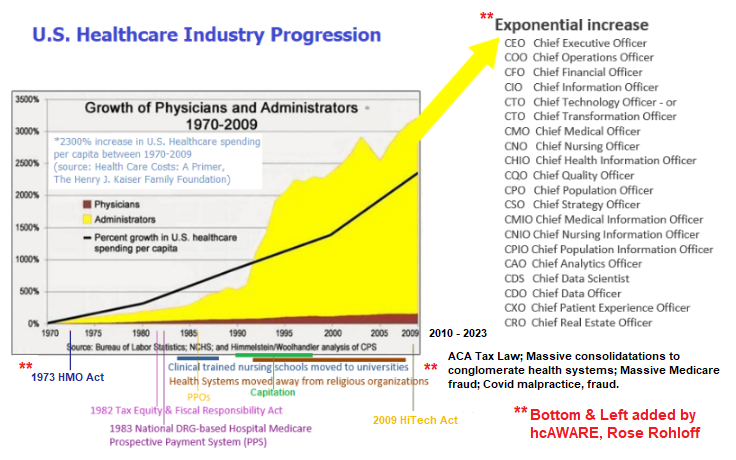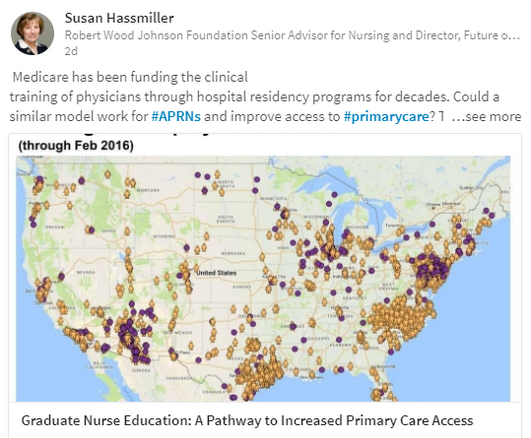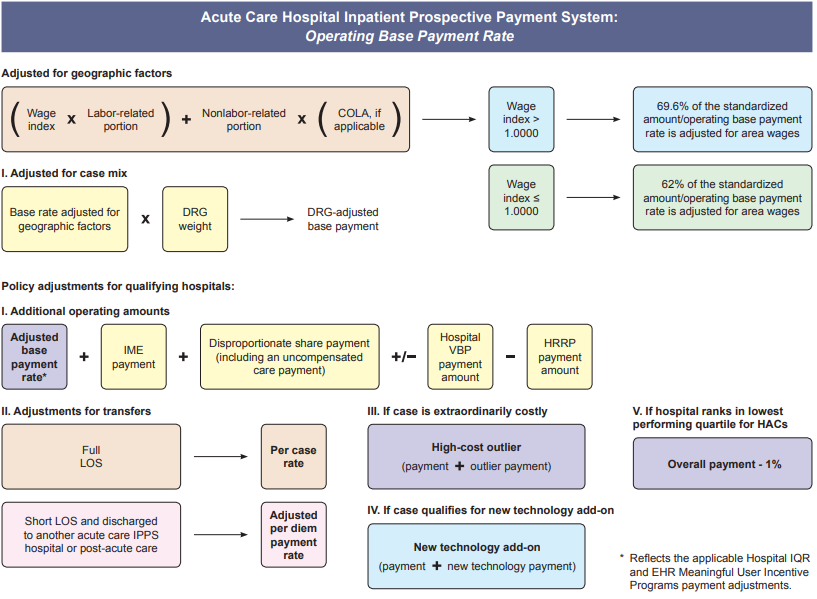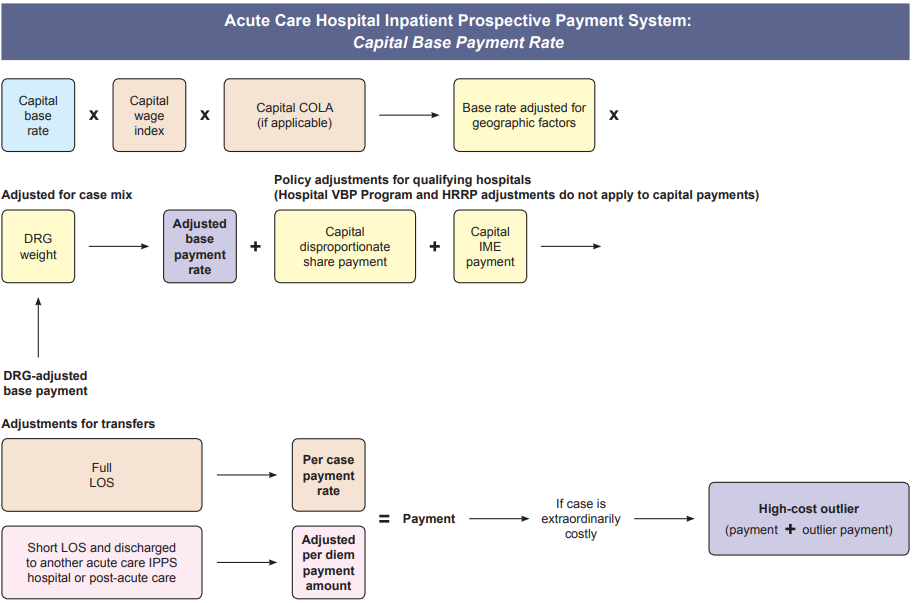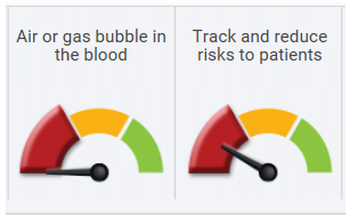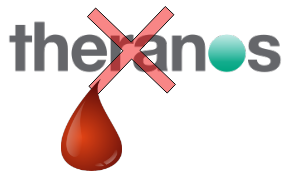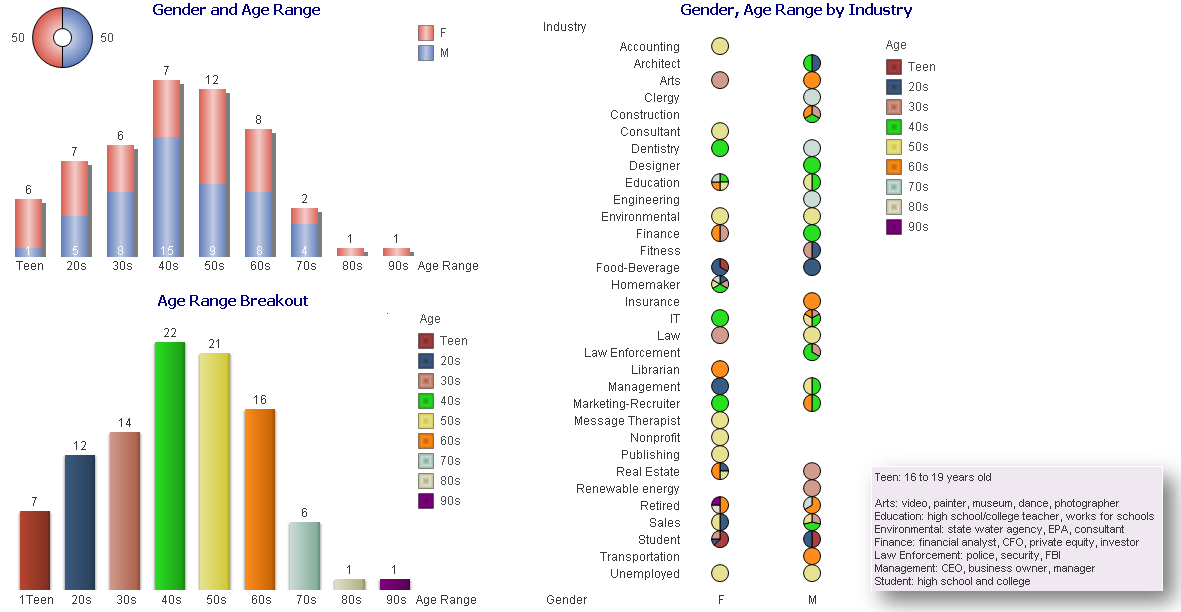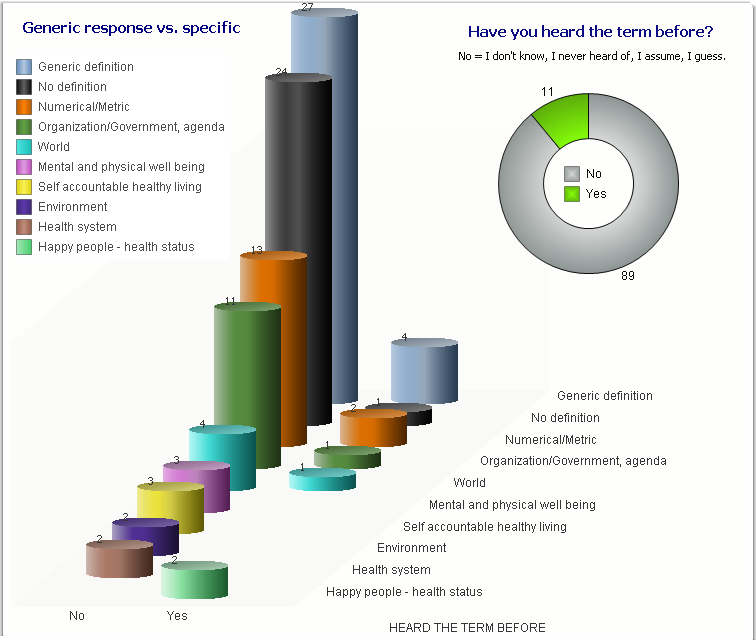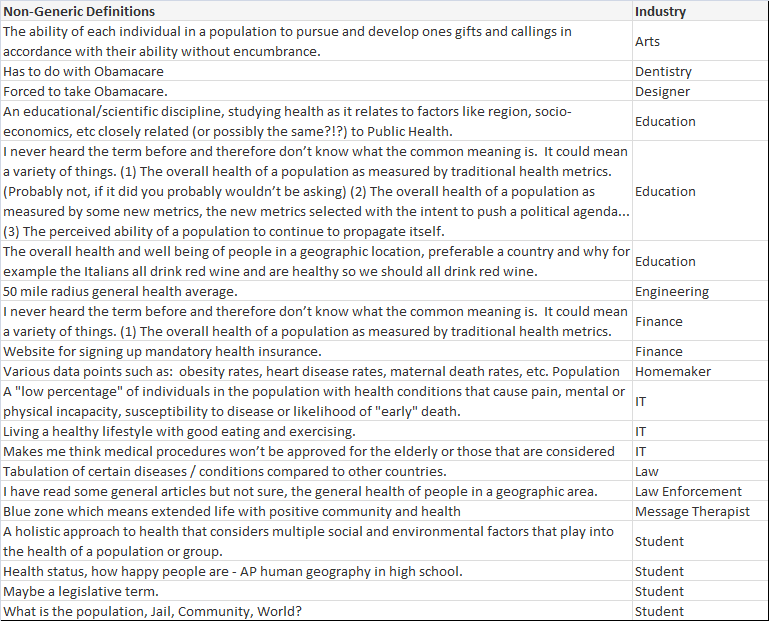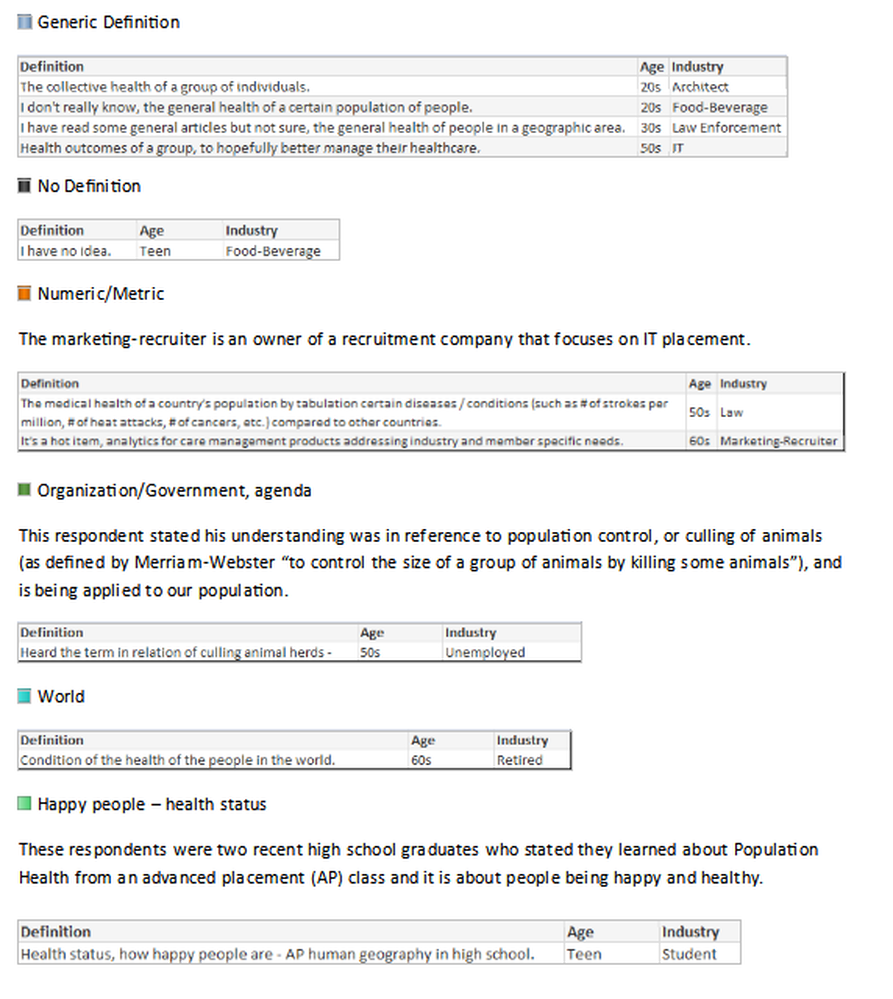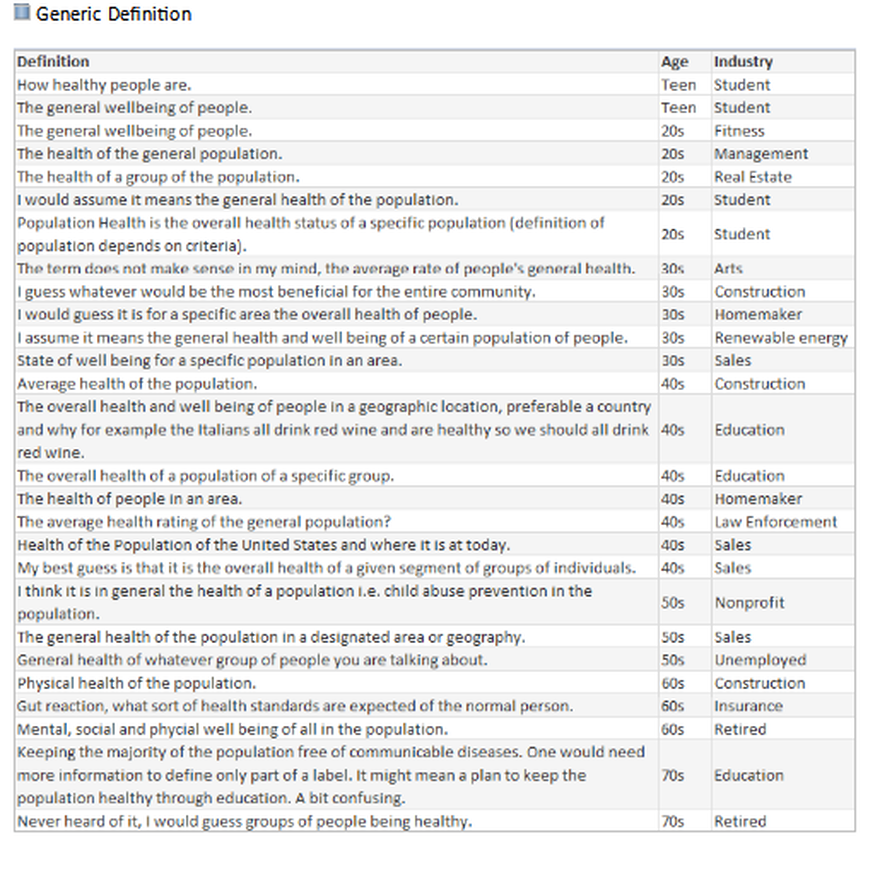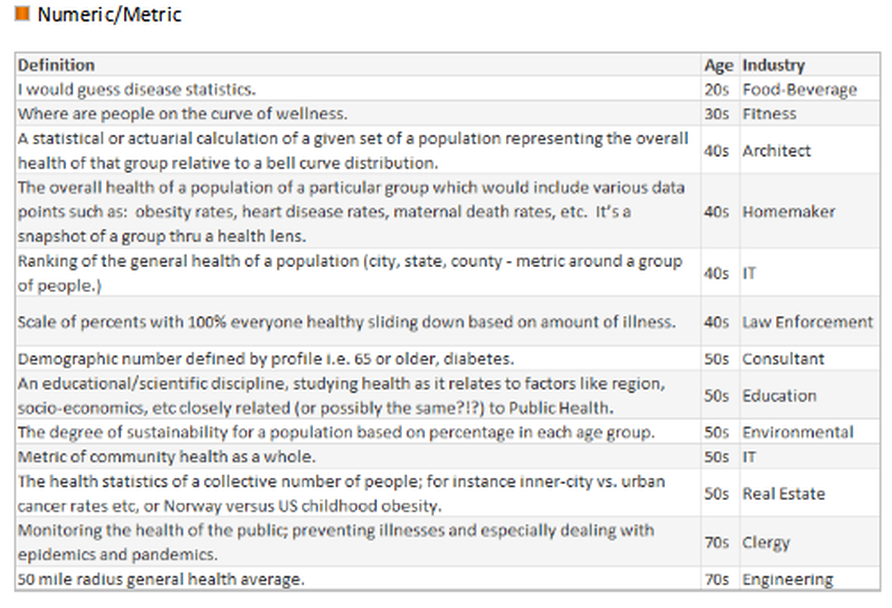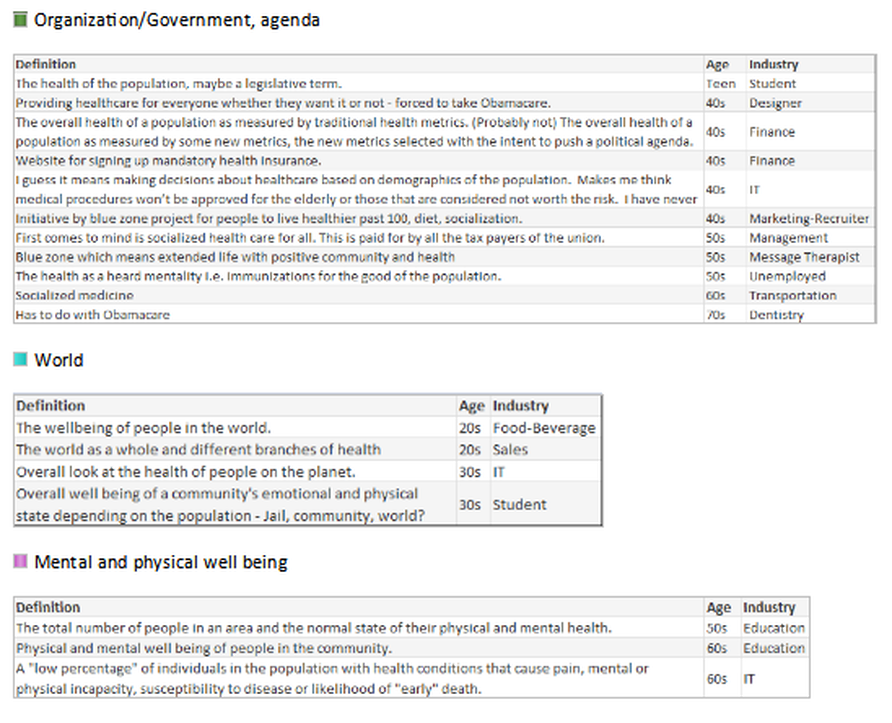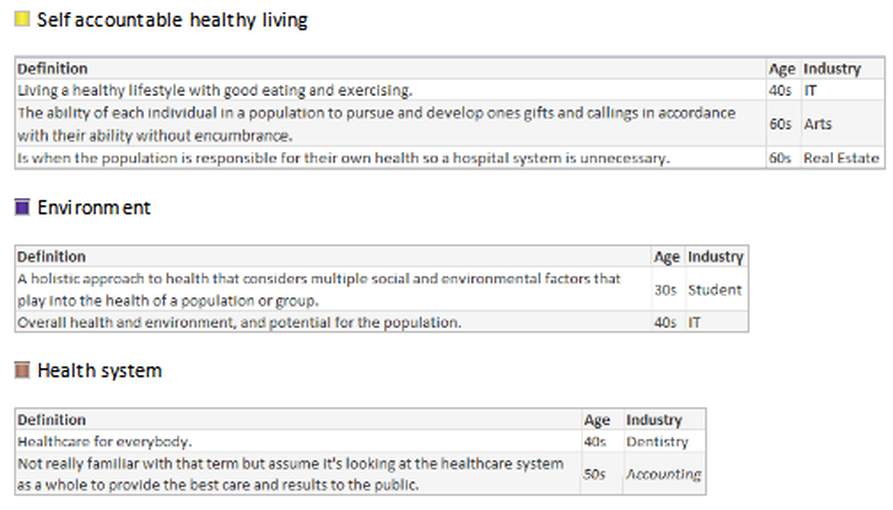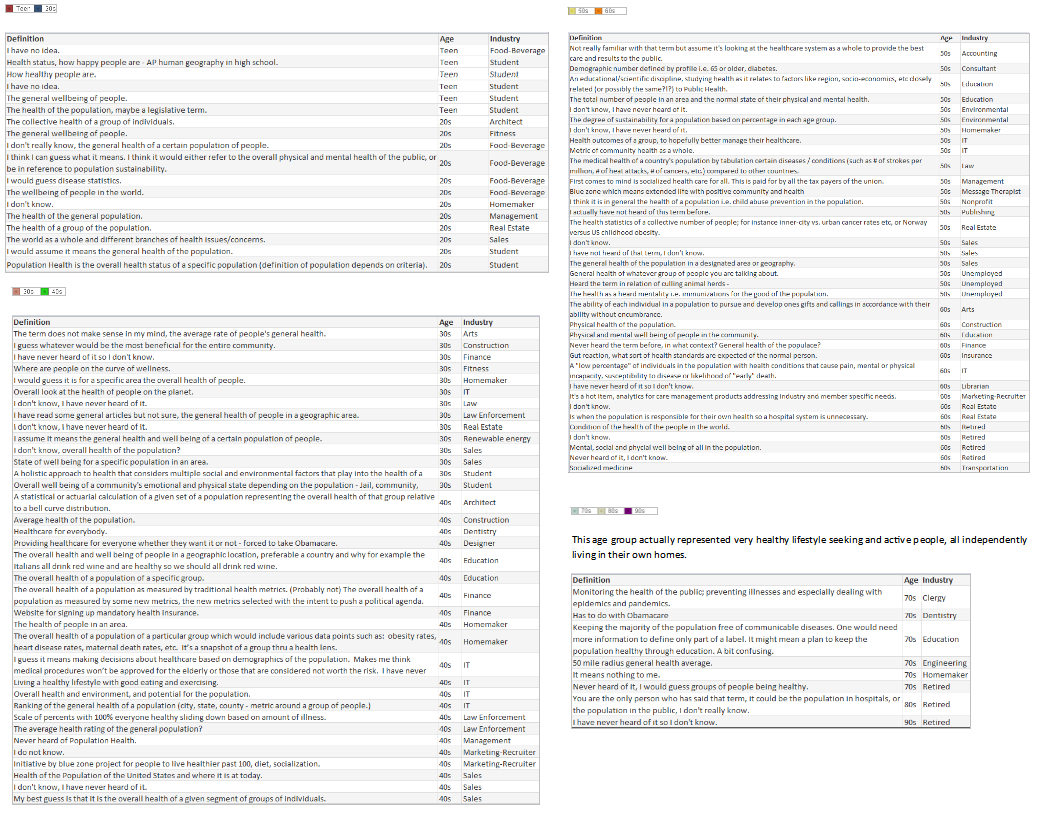|
by Rose Rohloff Mayo Clinic Launches $1B Upgrade To Electronic Records System |
| Arthur J. Stansbury created the Catechism on the Constitution (the “Catechism”, Boston 1828) that was used to teach schoolchildren. | Today, Magruder's American Government is “hailed as a stellar educational resource for nearly a century, updated annually to meet the changing needs of today's high school students and teachers. The program's engaging narrative is enhanced with numerous primary sources, political cartoons, charts, graphs, and photos …” [Amazon] |
- "That a people living under a free government which they have themselves originated should be well acquainted with the instrument which contains it ... this would be no good reason why pains should not be taken to understand and to imprint (the Constitution) upon the mind ... its brevity surpassing all example, it is certainly a most reprehensible negligence to remain in ignorance of it." (Preface)
- "Let every American learn, from his earliest years, to love, cherish and obey the Constitution. Without this he can neither be a great or a good citizen." (Page 10)
- Question: "But if even the Congress itself should make a law which is contrary to the Constitution, must the people obey it? Answer: No." (Page 11)
- U.S. Government is taught as being a Representative Democracy versus specifically a Republic (which is not discussed), and describes the various forms in rudimentary text, without addressing the ideologies in depth.
- Communism is not discussed especially in relation to China, the Chinese Communist Party (CCP). The various forms of Government in detailed ideology should be Democracy, Republic, Socialism, Communism, Dictatorship, Monarchy, Tribal.
- Specific ideologies variations are not defined well and the writers are focused on side-by-side listing of dictatorships to democracy, with lack of detailed distinctions.
The public today is often bombarded with reports, news (non-news) - an overabundance of opinions regarding important issues. Without the basic understanding of the U.S. Republic, individuals have been conditioned to react with and vote based on emotion, as opposed to thoughtful reasoning; the breaking down of issues with intelligent discourse based on Constitutional understanding.
Authors have broken down a differentiation of a democracy in the simplest term as a majority dictating issues. When a majority of persons are swayed with emotion, it is ‘mob rule’. This distinction is important, as more and more voters are craving socialism, with groups such as ANTIFA and #xyzMOVEMENTS continuing to form. The Founding Fathers researched all the various forms of governments thoroughly before specifically establishing a Republic instead of a Democracy (as reviewed in the link video, discussing the rule of law versus the majority).
James Madison reviews the downfalls of a large democracy in the Federalist Paper, No. 10: The Utility of the Union as a Safeguard Against Domestic Faction and Insurrection.
The latent causes of faction are thus sown in the nature of man."
- Steve Gaynor (Republican) for AZ Secretary of State: “… bedrock of our democracy …”
- Katie Hobbs (Democrat) for State Senator: “… foundation of our democracy …”
Taking the importance to the Nth degree for properly educating and understanding the foundations and ideologies of a Republic versus a Democracy: A democracy may vote in socialism; the U.S. Republic cannot, because representatives must abide by the guaranteed protections within the Constitution, especially our Rights.
PART 2 of 4: What is a Right? Why Healthcare is Not a Right.
| Question 1: "What is the Constitution?" The most basic, succinct answer is that it’s the document protecting our Rights from the government, Rights it cannot take away. The Founding Fathers Alexander Hamilton, John Jay, and James Madison wrote about the rationale behind the establishment of the Constitution, with the general insights:
| Question 2: "What is a Right?" The first Rights established in the Declaration of Independence in 1776: “All men are created equal, that they are endowed by their Creator with certain unalienable Rights, that among these are Life, Liberty and the pursuit of Happiness — That to secure these rights, Governments are instituted among Men … Therefore, when groups use the current statement healthcare is a Right (or a human Right); there is a general lack of understanding regarding the term. The Bill of Rights is the continuation of all Rights naturally afforded to citizens that the government cannot take away; not Rights to be supplied by the government. Rights are Inalienable from God, fundamental rights not transferable or impossible to take away. These rights include the life, liberty, and the pursuit of happiness, the right of privacy, to travel, and have possessions. |
The concept of a Right given by the government is an oxymoron, being the very essence of Unconstitutional. Rights define our freedom from the government. When Rights are given to, allowed control by the government, it is socialism. And, Socialism is defined in Merriam-Webster as:
economic and political theories advocating collective or governmental ownership and administration of the means of production and distribution of goods (and services); there is no private property; a system which the means of production are owned and controlled by the state; a stage of society in Marxist theory transitional between capitalism and communism.
There is currently a growing trend calling for a single healthcare payer: That single payer is the government. Giving full, nonmilitary healthcare control over to the government is contrary to having Rights, often called socialized medicine, which is in actuality what I term healthcare socialism.
PART 3 of 4: Single Payer = Government, Healthcare Socialism
Recent articles have cited a high percent (up to 40%) of medical students wanting a single payer. This year, Medical students bring the AMA into the single payer dialogue AMA House of Delegates 2018 Annual Meeting, June 9-13, 2018
Well, who is that payer? The answer is the government. What would be the single payer system - VA, Medicare, Medicaid? I suggest we not use the term single payer system, and instead delineate the true description, what I refer to as healthcare socialism.
As discussed in Part I of this series, the Federal Government was designed for protection of the Constitution, and to be effective with limited power, operating with efficiency. Government run healthcare has proven to not have limited power, to be costly with decreased quality, and to be inefficient.
- 301 National take down in healthcare fraud results in approximately $900 million in false billing1
- Three charged in $1B Medicare fraud scheme2
- 412, including doctors, in $1.3 Billion Health Fraud3
- Woman defrauds Medicaid of $1 Million4
Healthcare socialism includes physicians as employees of the hospitals, ergo employees of the government. Under the current government payer system, Hospital-employed physicians drain Medicare By Alex Kacik|November 14, 2017
1 National Health Care Fraud Takedown Results in Charges against 301 Individuals for Approximately $900 Million in False Billing, Department of Justice, June 22, 2016, https://www.justice.gov/opa/pr/national-health-care-fraud-takedown-results-charges-against-301-individuals-approximately-900
2 Justice Department charges three in $1 billion Medicare fraud scheme, The Wall Street Journal, July 22, 2016, http://www.foxnews.com/politics/2016/07/22/justice-department-charges-three-in-1-billion-medicare-fraud-scheme.html
3 U.S. Charges 412, Including Doctors, in $1.3 Billion Health Fraud, The New York Times, July 13, 2017, https://www.nytimes.com/2017/07/13/us/politics/health-care-fraud.html
4 Beverly Woman Defrauded State Of $1 Million From Medicaid: Prosecutors, DNAinfo, October 14, 2017, https://www.dnainfo.com/chicago/20171018/beverly/santila-terry-speech-therapy-clinic-theft-charges-docbarbie-hair-boutique/
- A 49% increase in hospital-employed physicians between 2012 and 2015 led to a $3.1 billion increase in Medicare costs related to four specific procedures in cardiology, orthopedics and gastroenterology, according to analysis from consulting firm Avalere Health.
- Medicare paid $2.7 billion more for diagnostic cardiac catheterizations, echocardiograms, arthrocentesis and colonoscopies delivered in hospital outpatient settings than it would for treatment in independent facilities, while beneficiaries footed a $411 million higher bill.
- Hospital-employed physicians performed more services in costlier hospital outpatient settings, resulting in up to 27% higher costs for Medicare and 21% for patients.
How would it be funded initially as there is no long term sustainability.
The existing Federal Total revenue as of 2018 is only $3.654 trillion (T)
| The current US Debt Clock as of August 2018 reads:
|
- An independent analysis of Sanders's plan conducted by the left-leaning Urban Institute estimated that it would cost $32 trillion over 10 years.
- And those are just the financial costs. Socialized medicine's human costs are even greater. Single-payer systems, the world over, ration care and force patients to wait for treatment.
- The United States can barely afford its existing healthcare obligations. In 2017, the federal government spent more than $700 billion on Medicare -- a 65 percent increase over just 10 years.
PART 4 of 4: Under Healthcare Socialism
New York University (NYU) just announced they now have a tuition free medical school. In response, Elisabeth Rosenthal, MD, editor-in-chief of Kaiser Health News, explains why NYU got it wrong.
In an op-ed for The New York Times, Dr. Rosenthal, a former emergency room physician, cites research that shows medical school debt often discourages students from pursuing lower-paying specialties or from practicing in areas where the majority of patients are on Medicaid.
Instead, students are more likely to pursue more highly paid specialties, like neurosurgery or orthopedic surgery.
By eliminating tuition … She claims most physicians who enter higher-paying specialties are able to quickly pay off their student loans; the physicians that have trouble doing so are those who opt to take lower salaries as primary care physicians …"Instead of making medical school free for everyone, NYU — and all medical schools — should waive tuition only for those students who commit to work where they are needed most," she wrote. (See Title V of the ACA tax law passed under Obama.)
The ACA Tax Law (we need to stop calling it Obamacare, it is a tax law) has a lack of understanding, or misrepresentation, because it is not even read in entirety for the ability to even debate, and needs for repeal,
… authorized to be appropriated, out of any funds in the Treasury not otherwise appropriated, the following:
‘‘(1) For fiscal year 2010, $320,461,632.
‘‘(2) For fiscal year 2011, $414,095,394.
‘‘(3) For fiscal year 2012, $535,087,442.
‘‘(4) For fiscal year 2013, $691,431,432.
‘‘(5) For fiscal year 2014, $893,456,433.
‘‘(6) For fiscal year 2015, $1,154,510,336.
‘‘(7) For fiscal year 2016, and each subsequent fiscal year, the amount appropriated for the pre-ceding fiscal year adjusted by the product of ‘‘(A) one plus the average percentage increase in the costs of health professions education during the prior fiscal year; and ‘‘(B) one plus the average percentage change in the number of individuals residing in health professions shortage areas designated under section 333 during the prior fiscal year, relative to the number of individuals residing in such areas during the previous fiscal year.”
In summary, $BBs funneling out without oversight or budgeting and funding of bodies through schools without quality education, and then dictating who must work where and when.
The ACA is predominately discussed in regards to healthcare coverage for uninsured, some $17M people, because people choose to not make the time to actually read the whole Tax Law. As Title V reflects, monies being spent have nothing to do with coverage, and is shows spending with no accountability, and we are seeing negative outcomes with the reduced training and preparedness as clinicians – clinical time and sciences replaced with diversity, global health issues, nursing theory. Last year, I was interviewed by a university with a ‘leading nursing college’, asking me if people who would make good nurses are prevented from becoming nurses because they cannot pass basic sciences, so we just need to reduce more of the sciences as “they don’t use that knowledge anyways, right?”
| As the dark side of IVF slowly comes into focus, even more transparency is needed by Pamela Mahoney Tsigdinos, July 27, 2018 |
The June 29, 2018 BECKER'S Hospital Review article shares the viewpoint "Froedtert CEO Cathy Jacobson: Not every patient needs a primary care physician" (PCP). The article is the perspective from the viewpoint of a health system CEO. The following is a perspective, counterview from patients, the individuals in the population.
Many people have expressed utter frustration from lack of a good Primary Care Doctor, warranting unnecessary ER visits because a doctor will not call back; the lack of one doctor in charge who would simply LISTEN to them, who knows them - not as personal friends, but with an in-depth professional relationship.
I have been asked several times in various states, "Do you know of any good Primary Care Doctors? I cannot find one." Universally, I am hearing: a gross lack of comprehensive assessments from doctors; clinicians not taking the time to get to know and listen to what is going on, causing the passing through of patients to specialists versus a primary care doctor creating a plan of care and focused tests for getting an actual diagnosis; lack of avoidance for hospital visits with increasing costs that could and should be avoided because conditions allowed to worsen; and doctors simply writing prescriptions for symptoms.
Her quote continues, "... insight further into consumer driven wants, we are finding that a substantial sector of the population does not want or need a primary care physician relationship. People need primary care but not necessarily a physician relationship." The issue is the primary care physician practices have been acquired by the hospital-health systems, with the biggest complaint from people in the population not being able to find a PCP; and those now under health systems, the doctor only giving 10-15 minutes of time, before passing off to specialists with no plan of care, and/or simply writing another prescription. Many in the public just find it faster, or are being told to just go to the ER. From the perspective of health system CEOs, it would appear primary care is not wanted or needed, which drives up the hospital ER and inpatient business. When actually speaking with individuals across the country, it is the opposite, people complain lack of care coordination, and "the doctor doesn't know me and is not taking the time to listen to me - I want them to actually figure out a diagnosis of what is wrong."
Kyle Reyes, CEO, The Silent Partner Marketing
The solution is bringing analysis down to the most base level of management with front line analysis, to coincide with first-hand observation, the voice of the patient & their caregivers/champions, and reducing the ever growing administrative overhead. Bigger is not better for addressing health and care of populations, when the focus is shifted upward with large systems where individuals are lost: Especially when the individual issues are indicative of the core problems that need to be addressed for quality care delivery.
The need for P&P Reviews
| by Rose Rohloff | HealthLeaders published an article Proper Sharps Management in Senior Living Helps Reduce Risk for Needle Stick Injuries Feb. 9, 2018, addressing the need for proper containers to safely dispose of used needles. Sadly, stories have been relayed regarding used syringes being left in the beds of patients in hospitals and rehabilitation facilities. As trained clinicians, this circumstance should never happen. The issue of needle-syringe safety, however, transcends all environments, including the increasing use in homes. Safety guidelines for syringe use |
- Have designated, well marked containers for immediate disposal (reference the Healthleaders article above)
- Use the one touch rule: after injecting medication, do not set the needle down; immediately drop into the designated, marked container.
- Do not recap the needle unless necessary. To avoid sticking oneself, drop the syringe directly into the container without recapping after used. If the needle requires coverage for immediate safety, keep the cap on a flat surface (such as a table) while inserting the needle. Then, lift the syringe with the cap on to firmly secure it against the table; avoiding needles accidentally being pushed through a cap, or missing the cap opening and puncturing your finger.
- Properly dispose of needle containers. See CDC recommended guidelines.
by Rose Rohloff
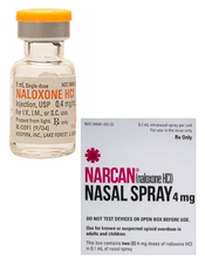
This week, reports were released in the media that US homes need Narcan to aid in opioid overdose epidemic, surgeon general advises
The general public needs to be aware: Naloxone has been reported to foster increased abuse of drugs by allowing revival of overdosing for continuing to take more drugs. Naloxone is the generic of Narcan. Just as EpiPen is only the delivery system and not the generic drug Epinephrine, It is important to know the difference between the brand name versus the generic drug name.
The danger of advising the untrained public to distribute emergency medicine
Many clinicians, let alone the general public, are not specifically trained in the proper dosage and treatment with Naloxone for the various forms and dosages of opioids and heroin.
FDA Advisory Committee on the Most Appropriate Dose or Doses of Naloxone to Reverse the Effects of Life-threatening Opioid Overdose ... Sept 2016
"The effectiveness of naloxone, and thus the exposure required, will depend on the opioid dose, the potency of the opioid in binding receptors, the lipophilicity of the opioid in crossing into the CNS system and the elimination half-life of the opioid, together with patient factors (7, 26). Appendix [2] and [2a] includes further information on naloxone pharmacology. The complex pharmacology of appropriate dosing is further compounded as often the fentanyl involved is illicitly manufactured without normal procedures or controls and may be introduced surreptitiously into heroin or prescription painkillers. Reports from the field confirm the need for additional naloxone doses to reverse opioid overdoses including those involving more potent fast onset synthetic opioids."
Narcan (Naloxone HCL) Use in Opiod Overdose: A Perspective
by Joan M. Rider-Becker, BS, PharmD, FMPA
Retired, Emeritus Professor, Pharmacy Practice Ferris State University College of Pharmacy Education/Training
B.S. Pharmacy-Ferris State University College of Pharmacy-1987
Pharmacy Practice Residency-Bronson Hospital Kalamazoo, MI-1987-1988
Doctor of Pharmacy (PharmD), University of Michigan-College of Pharmacy Ann Arbor, MI 1990
I have used opioids now for chronic pain management after a car accident almost twenty-years ago. I will admit, I was taken aback by my family physician about a month ago being given a prescription for Narcan (generic name Naloxone) as a “precautionary measure” for my chronic opioid use. The form I was prescribed is a nasal formulation vs. the oral/injection form. When I took it to a pharmacy to be filled, I had to undergo “special counseling” by a pharmacist (even with my credentials) which consisted of a video on proper use and a warning that after use, 911 had to be called and I was to be taken to the emergency room for follow-up. This is the proper follow-up when someone is prescribed any rescue medication for a drug reaction. The Naloxone is only to be given when a known opioid (i.e. codeine and it’s derivatives; Fentanyl, Meperidine, etc...) is given or taken in life-threatening incidences. I was instructed, "Were you aware that Naloxone has two elimination half-lives because this drug has an active metabolite; and, were you aware that Naloxone and Naltrexone are different agents, but are easily confused."
I believe giving someone this agent for overdose situations is giving a false sense of security that nothing else needs to be done. Nasal Naloxone is like putting a bandage on a cut artery. You may stop the blood flow at the moment, but the wound will continue to bleed if the wound isn’t sutured properly. Without appropriate emergency room follow up of an opioid overdose the person may die from that overdose.
Many opioids vary in dose, strength, predictability and most of all drug half-life. Knowing the half-life of drugs is essential to know how long the drug is going to last in your body. Drug half-life’s, drug absorption, distribution and elimination is well covered in Colleges of Pharmacy in courses such as pharmacology, pharmacokinetics and pharmacotherapeutics. Pharmacists do not know the pharmacokinetics on every drug substance out there by memory, and we are called the drug experts. Physicians do not have nearly as much education on medications as pharmacists, yet they are the first line of treating drug overdoses in emergency situations along with the nurses, Physician Assistants and Nurse Practitioners.
The general public is being provided a false sense of security by the media to carry this drug in their homes to address the opioid crisis. The public needs to be AWARE there is more to treating an opioid overdose than just squirting this agent up their nose.
| by Rose Rohloff | Another common practice over the past decade is the prescription of broad spectrum antibiotics for non-life threatening conditions. Broad spectrum antibiotics are for use in life threatening conditions/sepsis when there is no time to wait for a culture, or the inability to do a culture. Broad spectrum antibiotics target the necessary bacteria needed in the adult intestinal tracts; and so, the standard practice has become the second prescribing for probiotics; the requiring of multiple medications to be taken. Additionally, numerous reports over the last 10 years have shown the continued misuse of antibiotics (e.g. CDC Grand Rounds) causing antibiotic resistance, with the need for more and more antibiotics to be created and used. |
What has caused the layering of medications
Consumer engagement is needed with all medications being prescribed to be fully empowered, to understand: 1) the need for prescriptions, why and when appropriate, 2) the side effects of medications to determine alternatives versus adding on more medications, and 3) to eliminate the misuse of medications without the continued layering of additional drugs. Antibiotics should only be used when the body, given time, cannot fight a severe bacterial infection. And, antibiotics should only be given out after a culture is performed to eliminate a virus as the cause, or to target the specific bacteria. Broad spectrum antibiotics should only be used with life threatening-septic issues while waiting for a culture, or there is not the ability to perform a culture.

A middle aged male was recently experiencing severe abdominal pain, subsequently prescribed three (3) medications in two (2) weeks from three (3) different sources (an Emergency Room, a primary care doctor, a Gastroenterologist). There was no diagnosis, no care coordination within an established plan of care, no thorough instruction in the medications, with the last prescription based on a guessed misdiagnosis which worsened his pain. One prescription was a steroid with the patient being instructed to take as he needed it; the second was an offering by the office secretary blindly asking if he wanted an Epipen when he called to actually speak with the physician for worsening abdominal pain, swelling and to discuss his lab work.
The common standard operating procedure (SOP) in medicine has become symptom and write a prescription, another symptom and write another prescription, etc. This SOP has lent to the opioid crisis, antibiotic resistance, as well as many other drugs being dispensed routinely with side effects causing secondary prescriptions for the side effects of the existing medications being taken.
Several variables cause the use of this SOP beginning with the lack to get a full, detailed history - taking time to speak with patients - to establish a diagnosis and then plan of care, determining if simple steps are first needed such as icing and therapy for pain before opioids, or to remove foods and medications isolating side effects or allergies. Last week, I attended the HIMSS conference, the largest healthcare conference in the country, with attendees from around the world. One executive stated, "I just returned from Finland where they have an effective health system, because people live healthy, and the doctors appropriately tell their patients NO when seeking a simple, quick fix of a drug that is not needed."
Reasons for the mainstream SOP?
I think there are always multiple reasons for issues within healthcare. The symptom=prescription issue can be: Doctors are processing patients through with 'factory-care', Physicians receiving kickbacks from pharmaceutical companies; The lack of proper clinical training; Protocols blindly being followed without individual evaluation (e.g. Vanderbilt University study on Plavix standard for all Cardiac Cath Patients); as well as the alliance of public policy and pharma, direct consumer marketing without proper education.
A healthcare executive summarized the situation well last week when stating to me, "I ultimately make the decision for my own care, with the advice of the physician. It is the doctor's role to diagnosis, and then we discuss all options, along with a plan of care, coordinated with speaking with all other involved physicians." It is important for consumers to understand the need to champion their own care working with physicians, determining what options should be used before medications (diet and some of the old fashioned home remedies still hold true), addressing underlying issues versus only symptoms, and removing or changing medications to eliminate side effects when there are alternatives. Questions to have answered:
An example of direct consumer marketing lacking in education: In 2016, there was broad publication when the company Mylan raised the prices of the Epipen after State Law was passed to stock it in every school. Many individuals and groups were upset because there is not a generic offering. With proper information, the public would be educated that Epipen is the patented delivery system, not the drug epinephrine. The generic already existed in the form of a $15-$18 sterile needle. It is also necessary to establish where and when is it appropriate to stock epinephrine, not specifically the Epipen.
Why are you prescribing this medication, what is it specifically doing in my system?
What are non-medication alternatives, what are other medication alternatives?
How long should I take this, what is the outcome? How does it interact with my other medications?
What should be monitored for an outcome, side effects?
| Dr. Lee Beecher and David Racer in their book Passion for Patients wrote, "Dr. Kübler-Ross … called me to her office … “Ach, you’ve got a problem.” She said I needed to more clearly communicate... You have to learn about how to be a good son-of-a-bitch.” Pritzker (medical school at University of Chicago) taught me how to be a problem solver ... No one told me what I had to believe or how I had to think. They taught me how to think and apply what I learned to help my patients." (pages 55-57) Today I read someone describing the Forbes article by Brent Gleeson, “Apparently, during SEAL training, peer reviews are a weekly event. They have a process called top five, bottom five. Every week you anonymously rank the top five performers in the class as well as the bottom five.” Unfortunately, with political correctness and mandating diversity in healthcare, leaders and peers cannot or choose not to do ranking and hiring based upon performance. I have seen in the health industry that no one is allowed to hurt a doctor/nurse's feelings because they are being incompetent or under-performing, with patient's lives at stake. | It is a wonderful idea of ranking on performance so everyone pushes each other to excellence. But when a 30 year veteran nurse is told to shut up because she was holding accountable the new doctors and nurses not performing, competency rating (especially by knowledgeable veterans) was a great practice that worked 20-30 years ago - but one that is not tolerated today. The result, medical errors are now the #3 cause of death. The industry is killing people with our focus on kindness versus caring competency. Personally, I want a well trained, experienced, compassionate son-of-a-bitch taking care of me, as opposed to someone who is being nice while not knowing what they are doing. I want a doctor and nurse who takes care of me so I can go home and I don’t have to see them again because they are my quality clinicians, not my pals. |
Elisabeth Kübler-Ross, Passion for Patients, (page 62)
The media writes about the desire for transparency with many in the public demanding posted costs for healthcare; however, the public fails to understand - healthcare is not the same as other businesses. First, in business production & marketing creates increased sales volume. Whereas, in healthcare volume is driven by need, and the primary goal of providers should be getting, keeping people healthy, in effect driving away their business. Second, the highest percent of revenue for hospitals comes from the government agency Health and Human Services (HHS), especially the Medicare division. Below is the formula for calculating inpatient payment. So unlike businesses, utilities, or other services, healthcare costs, prices and payments are not simple amounts to readily comprehend. Healthcare information has been publicly available, now is the time to educate consumers in the population of how to find and understand it to champion their care.
Day’s statements exemplify an important component that has been lost in healthcare training - that of muscle, or specifically, movement memory. Clinicians are supposed to be trained in school regarding the need and proper technique for handwashing. More importantly, clinicians used to have extensive clinical time working in patient areas developing the movement memory for proper hand washing, and automatically keeping in mind what is clean vs. dirty, where established sterile fields are located with maintaining of sterile gloved hands. The training was extensive and repetitive, for clinicians to automatically move appropriately in fast paced, life threatening situations - to not have to think and just act. One common, simple example is the insertion of IVs for fluid administration or needles for drawing blood. The needle or IV cannula (the needle with covered sheath inserted into the vein) is sterile, with clinicians wearing nonsterile gloves. The skin is typically wiped with alcohol to clean, and then all too often clinicians press nonsterile gloved fingers on the cleaned skin to feel for the vein; thus, contaminating the cleaned surface of the patient’s skin where insertion directly into their vein will occur. Even though the nurse/doctor is wearing clean gloves, they are not sterile, and worn to protect the clinician. With repetitive movement training, clinicians would press to find the vein before properly cleaning the skin, and clean their gloved fingers at the same time as the patient’s skin.
Two frequent complaints often heard from patients, "They dug around in my arm and could not find the vein, it was so painful." "They poked me five times because they did not know what they were doing." Blood draws and starting IVs is a skill, just like shooting at a target or in high stress a gun fight, that requires proper training of technique, and more importantly, repetitive practice - especially with the understanding when someone's life depends upon it. Additionally, the conditioned good technique should be second nature to purge ALL air from needles and tubing, including from the side ports of IV tubing, to prevent the potentially fatal embolus as a hospital acquired condition (HAC).
With the great reduction of hands on clinical time in schools (with replacement of online theory, population/global health, writing, and shadowing nurses), this movement memory training has been lost, with the shift of cost to hospitals for training, buying expensive monitoring equipment, or addressing the subsequent HAIs/HACs. Bringing the ingrained, repetitive movement training back to school training would instill within clinicians and CNA/PCT caregivers the instinctual, reactionary awareness of dirty versus clean or sterile, and proper IV/needle insertion, while delivering care; whether normal daily care or imminent life versus death situations – because they just do what they are trained to do without having to stop and think through quality actions.
| Healthcare can leverage existing solutions with proven value from other industries, by adopting and adapting them with successful strategies. And, what has shown to be more successful than palliative care (PC) team coverage in healthcare, and Navy SEALs in the military, for team coordination with a singular mission focus. |
By rebranding PC teams and the team process, expanding with additional SEAL successful methods and approaches, we can create the Healthcare version of SEALs (sea, air, land), as APAC Teams (acute, post-acute, and community) - expanding the process to operate in every environment versus only in facilities, for enhancing the quality of care of high risk patients versus limiting to end-of-life cases.
The following chart displays characteristics of SEALs, obtained from several former SEAL, special operation personnel, and military officers; with several of the attributes emulating characteristics regarding the successful palliative care (PC) team process.
| From Brent Gleeson, (BG) Navy SEAL, combat veteran, national speaker, leadership training consultant | Rose Rohloff, palliative care success as a process - rebranding away from end-of-life association |
Why were SEAL Teams created? | Why were PC Teams created? |
| “The origin of SEALs began in WWII as underwater demolition teams. As the years progressed through Vietnam, the need was recognized for unconventional, special operation assets. And so, the SEAL program combined the best resources, tactics and training from the various branches of the military; as Tier One special operations units, learning from current and past experiences.” BG | The teams began as comfort care for end-of-life patients to supply pain relief. With the growth of hospice to address comfort care for the dying, PC matured with specialty trained teams for coordinating care based on individual patient wishes. PC teams, like SEAL teams, consist of specialists from various disciplines across departments - usually a nurse (RN)/nurse practitioner (NP), social worker (SW)/case manager (CM), dietician (RD), pastoral care, a pharmacist (PhD), and sometimes a physician; all working with the primary care physician (PCP), determining patient’s desired quality of life outcomes, planning care, coordinating and communicating with the family/power of attorney – being a team advocate at the ground level for avoiding under/over/mistreatment. |
Why are SEAL Teams needed? | Why are APAC Teams needed? |
| “To transform from old school hierarchy, to a needed organizational culture with vertical silos removed across departments. The culture is an adaptive network ecosystem, with a mindset shift to operate decentralized, to move swiftly and to learn fast.” | As with SEALs, healthcare needs to transform from old school hierarchy, to culture without vertical silos across departments – and more importantly the continuum. Expanding and rebranding PC teams to APAC teams would enable a culture that is an adaptive network ecosystem, with a mindset shift to operate decentralized, to move swiftly, and to learn fast with delivering personalized best practice, quality care. |
What is unique about SEAL teams, their composition & mission?“The teams are small and nimble for direct action and rescue. The program has a very well-defined culture, by design, with a difficult program that is totally focused on how to reach objectives, be adaptive, and based on learned lessons from the past; and, failure is not an option." BG "Another important distinction is that post 9/11, there was an increase in the level of hard training, instead of easier, with a widening of the pool. The program was made harder to ensure that teams are even more well trained with tighter controls.” BG SEALs are also experts at collecting information and intelligence through reconnaissance.* | What is unique about PC teams, their composition & mission?The teams are small and nimble for direct action, coordination and follow through. The program has a very well-defined culture, by design, and certified programs focus on how to reach objectives, be adaptive, and based on learned lessons from the past. The PC process needs the support to expand across continuums, so failure is not an option regarding the prevention of readmissions. Another important distinction is that healthcare needs to learn from the SEAL training regarding nursing, physician, and pharmacy programs, to again increase the level of hard training, instead of easier, with decreased credits and clinical experiences, while being able to graduate. The education needs to be made harder for clinicians, to ensure that they are quality, patient advocates. APAC teams are then elite trained for complex, chronic cases with tighter controls. APAC teams can be utilized for being proactive in care with collection and coordination of information for high risk patients defined as complex, chronic conditions. |
How are SEALs effective at trouble shooting at ground level?“There is a single mission narrative, ground level accountability to get the job done." SEALs work in all environments: desert and urban areas, mountains and woodlands, jungle and arctic conditions**; successfully operating across spectrums - sea, air and land. | How are PC teams effective at trouble shooting at patient level?There is a single mission narrative, with ground level accountability for individual care based on the patient's quality of life desires. What needs to be expanded is the seamless transition/hand-off of the PC process with regards to high risk patients, so APAC teams effectively function throughout the continuum for health – acute, post-acute and within the community. |
** http://www.nsonswmentor.com/Navy-SEAL.html
| A great target population, as one example, is the increased volume of individuals with dementia. While speaking with a retired executive, who has a family member with 10 years of progressive dementia, she stated, “Doctors are focused on performing all procedures or surgeries for them, oftentimes doing over treatment because the family members have a high emotional investment: | The Palliative Care Process rebranded BECKER’S Hospital Review Rebranding the Primary Care Physician (PCP) October 7, 2016 along with new APAC Team approach - process, is redefining palliative care teams as medical care coordination using interdisciplinary teams, for achieving individual patient’s quality of life outcomes, in any environment. |
APAC teams would also address the necessary information gathering for determining the real issues of consumers, for example, who needs dietary changes or removal of drugs with side effects before being prescribed new medications by physicians, causing even more side effects or noncompliance, and self medicating or opiate abuse.
PC teams can be expanded to APAC teams utilizing the successful palliative care process across the care and health continuum, eliminating the end-of-life association, and differentiating from the terminally ill care of hospice. Just as SEALs operate in every environment (air, sea and land), APAC teams can be an extension of PC teams to be the quick, nimble action teams in all settings, especially the community, for patients with complex and chronic conditions.
WatchPAT is an FDA-approved portable diagnostic device that uniquely uses finger based physiology and innovative technology to enable simple and accurate Obstructive Sleep Apnea (OSA) testing while avoiding the complexity and discomfort associated with traditional air-flow based systems.
| Realistically, physicians are pulled in multiple directions, and in many cases overloaded with patients: This does not mean that physicians lose sight of how to respond with patients, keeping them the focus, nor should the needs of reimbursement and learning electronic medical records supersede the patient. [read more] How care can quickly go off the rails without having a patient champion June 23, 2017 [read more] Published Becker's Hospital Review | 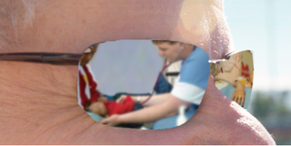 |
by Rose M. RohloffMany articles and discussions have centered around the rise and demise of Theranos. The company valuation and strategy were based on their technology for running multiple tests, at reduced cost, utilizing a pin-prick instead of a regular needle blood draw. Learned lessons from the devaluation and closing of the labs and blood testing centers include the lack of transparency, the need for thoroughly vetting new innovation, the requirement to understand the actual market, the need to support vision with qualified proof-of-concept, as well as deficient oversight and due diligence - to name a few. One lesson of success, however, has been overlooked: The model of a needed paradigm was beginning to be established. Leaders in the healthcare industry tout the need for enabling consumers to be more engaged with their own health. The vision for Theranos to offer new blood testing technology also precipitated three (3) key factors supporting increased consumerism: | 1- having lab results sent simultaneously to consumers/customers at the same time to their physicians, within 24 hours; 2- the passage of AZ law HB 2645, enabling individuals to order their own blood tests from a licensed clinical lab without a doctor's order, paying cash; and 3- easier access to get lab tests performed through multiple, local health and wellness pharmacies, instead of going to a lab or hospital. This paradigm has not been discussed as successful, and one key component for involvement with control over one's own health, expanding the traditional care continuum to a health maintenance continuum. |
With the many lessons learned from an aborted (shady) startup, marketed to disrupt the healthcare industry with its counterfeit technology, the direction for having consumer-driven as the process should not be overlooked - and actually be revisited to expand upon the great health ownership model of good disruption to healthcare.
Ms. Rohloff, a 35-year healthcare veteran with experience in nursing, business and information systems, spoke with Becker's Hospital Review about providing consumers with more detailed evaluation of quality care delivery. [read more]
“I spoke to more than 40 people for the story and heard many of the points you raise, unfortunately I could not include every nuance in a 700-word story. All the best, Anna” WSJ journalist
Lacking a uniform definition makes it difficult to define when healthcare has succeeded, to establish key performance indicators (KPIs) for monitoring progress, to determine which solutions lead to that success, and most important to educate the population on what initiatives and goals are being offered to help them. After performing the industry survey, I thought about one important step healthcare leaders have not done - ask the consumer, those individuals who make up the population - what is the public’s understanding or desire for Population Health.
With this in mind, I wanted to conduct a survey of 100 non-healthcare people across the country, of various ages, a range of industries, and regardless of political affiliation. Each person was asked:
- Have you heard the term Population Health before? Yes/No
- What does Population Health mean?
Many people looked confused upon being asked those questions and stated they have never heard the term before, while others provided an immediate description. Although the survey showed the lack of any definitive definition, and verified the general lack of understanding of the concept, it showed how much the public wanted to talk about Population Health, with several people engaging me in conversation to find out what the industry is doing and asking, “What is the actual definition?” *https://www.hfma.org/BIgoals/
Survey Results
What is your understanding of the definition?
- Numeric: The marketing-recruiter is an owner of a recruitment company that focuses on IT placement.
- Organization/Government, agenda: This respondent stated his understanding was in reference to population control, or culling of animals (as defined by Merriam-Webster “to control the size of a group of animals by killing some animals”), and is being applied to our population.
- Happy people – health status: These respondents were two recent high school graduates who stated they learned about Population Health from an advanced placement (AP) class and it is about people being happy and healthy.
In the hfm article, I proposed that the industry standard definition needs to include “a partnership with the community of health seeking persons” including “putting data into the hands of patients and encouraging them to share accountability for health outcomes by choosing healthy lifestyles, following health regimens, and seeking health education.” As the public survey shows, we in the industry need to ascertain their understanding, and have a collaborative relationship for population health management with a clear definition and public education regarding solution offerings.
What would be your understanding of a definition?
As a general finding, respondents between the ages of:
16-17 Wanted to convey input.
18-20 Had general apathy regarding the topic and generic input without additional inquiry.
30-40 Showed the highest desire to participate and have conversation regarding – the largest group with children and facing older parents with increased health concerns.
50-60 Wished to participate with continued conversation regarding what is happening in the industry with more defined ideas of what the term means.
70-90 Were an active and health conscious group being very productive in their communities and had a desire to learn about the topic.
Summary
| The bottom line of my hfm article and this survey, healthcare loves to create ambiguous terms and focus spending on generalities without quantifiable results, and focused on the masses - not on individuals. There is a quote attributed to Sam Walton, “There is only one boss, the customer. And he can fire everybody in the company from the chairman on down, simply by spending his money somewhere else.” While performing inquiries of the public, I have spoken to many people who shared the desire to control their own health decisions along with integration of standard and holistic medicine, and unfortunately several who are currently seeking health care in other countries. | A veteran health care consultant and nurse summarized this by responding: I read your recent article in HFMA Defining BI Goals for Coordinated Care and Population Health. You are spot on with the questions and approach the healthcare community should take, but do not, with population health strategies. It will not be surprising to see how many resources are used by healthcare systems and providers in their attempt to ‘manage their population’s health’ while the population continues to choose which provider (s) to receive care from during sickness and health. Until 2017 and 2020 when the FFS reimbursement model begins to shift, I suspect we will see outcome changes in larger healthcare systems that are engaged in an ACO and HMO model, but not significant enough across all healthcare systems. |
Addendum: all answers by age groupings
click an article
to read and post comments
Search topic
select category
All
APAC Teams
Care Quality
Champion Your Own Care
Clinician Quality Education
Experience Satisfaction
Healthcare Consumerism
Health Innovation
Medical Care Coordination
Palliative Care
Patient Engagement
Physicians
Population Health
Transitioning Care Coverage
search by date
July 2024
June 2024
April 2024
March 2024
February 2024
January 2024
November 2023
October 2023
June 2023
May 2023
October 2022
September 2022
July 2022
August 2020
April 2020
January 2020
June 2019
May 2019
April 2019
October 2018
September 2018
August 2018
July 2018
May 2018
April 2018
March 2018
February 2018
January 2018
December 2017
September 2017
June 2017
October 2016
September 2016
May 2016
March 2016
October 2015
June 2015
